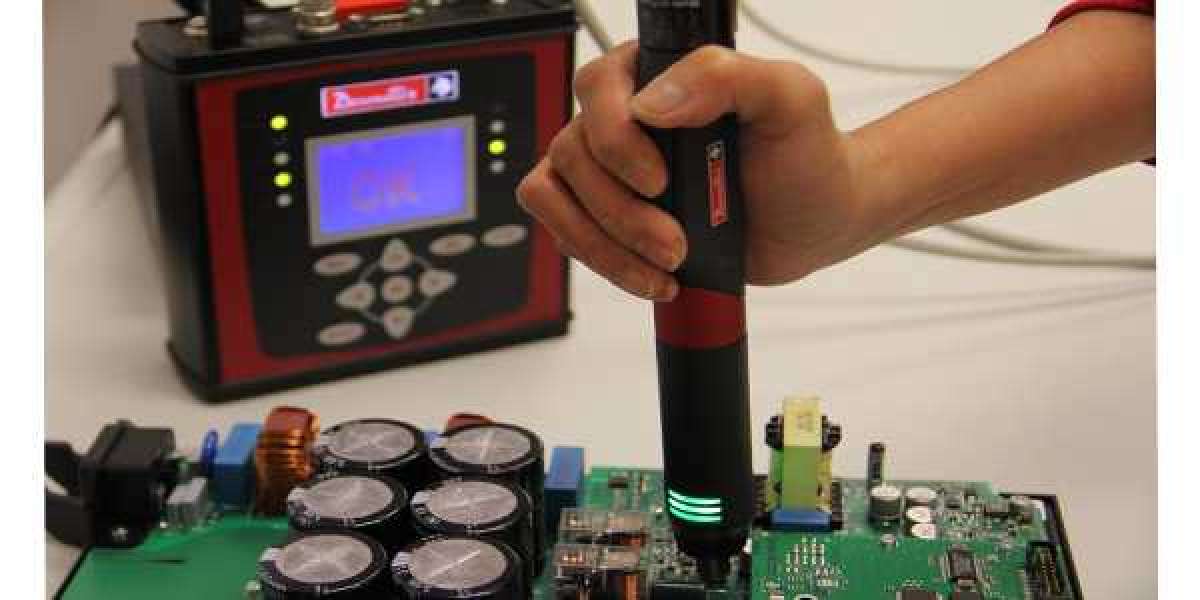Understanding Torque:
Torque can be visualized as the turning force applied at a distance from the axis of rotation. Imagine tightening a bolt with a wrench. The force you apply to the handle of the wrench translates to a twisting force on the bolt head. The distance between the point where you grip the wrench and the center of the bolt head represents the distance from the axis of rotation. The product of this force and distance determines the torque being applied.
The SI unit for torque is Newton-meter (Nm), while pound-feet (lb-ft) is commonly used in imperial units. Understanding torque values and their importance is essential for various applications, from simple DIY projects to critical tasks in professional settings.
The Role of Programmable Torque Drivers:
While traditional Programmable torque driver provide a click mechanism to indicate reaching the desired torque level, offer enhanced precision and functionality. These electronic tools allow you to set a specific torque value electronically. When the applied torque reaches the programmed setting, the driver typically provides an audible or visual alert, or even disengages automatically, ensuring accurate and consistent fastening.
Important Note:
Always consult the manufacturer's instructions and follow recommended torque specifications for your specific application. Using the wrong torque can lead to several problems:
The Consequences of Incorrect Torque:
Over-tightening:
Applying excessive torque can damage the threads of the fastener, potentially leading to shearing or stripping. In critical applications, over-tightening can even damage the components being fastened.
Under-tightening:
Insufficient torque can leave the fastener loose, compromising the integrity of the connection. This could lead to leaks, vibrations, or even complete failure of the joint.
Programmable torque drivers can help prevent these issues by providing precise control and ensuring consistent application of the correct torque value.
Why Torque Specifications Matter:
There are several compelling reasons why adhering to torque specifications is crucial:
Safety:
In many applications, proper fastening is critical for safety. For example, under-torqued wheel lug nuts on a car can lead to a loose wheel and potentially a dangerous accident. Conversely, over-torqued engine components can cause damage and potential leaks. Programmable torque drivers can help ensure safe and reliable fastening in such critical applications.
Performance:
Proper torque values are often essential for the optimal performance of a product or assembly. For example, under-torqued spark plugs in an engine can lead to misfires and poor performance. Programmable torque drivers help ensure that components are secured with the exact force required for optimal functioning.
Warranty:
Some warranties may be voided if incorrect torque values are used during assembly or repairs. Programmable torque drivers can provide documentation and data logs to verify that the correct torque was applied, potentially saving you from warranty hassles.
Quality Control:
In manufacturing environments, consistent and accurate torque application is essential for maintaining quality control. Programmable torque drivers streamline production processes and ensure consistent fastening across large batches of products.
By understanding torque specifications and utilizing tools like programmable torque drivers, you can achieve secure, reliable, and long-lasting connections in various applications.
Finding the Right Torque Information:
So, where do you find the proper torque specifications for specific applications? Here are some resources:
Manufacturer Instructions:
The manufacturer's manual for the equipment or assembly you're working on will typically include recommended torque values for critical fasteners.
Service Manuals:
For repairs or maintenance tasks, service manuals might provide detailed torque specifications specific to the model you're working on.
Online Resources:
Several online resources and fastener manufacturer websites provide torque charts and recommendations for various types of fasteners and materials.
Important Note:
Always prioritize information from the manufacturer's instructions or authorized sources as they provide the most accurate and relevant torque specifications for your specific application.
Final Thoughts:
Understanding torque specifications and the importance of precise fastening is crucial for achieving secure and reliable connections in various tasks. Programmable torque drivers offer a valuable tool in ensuring consistent and accurate application of torque, promoting safety, optimal performance, and quality control across various applications. So, next time you pick up a wrench or a programmable torque driver, remember torque talk is essential for a job well done.






